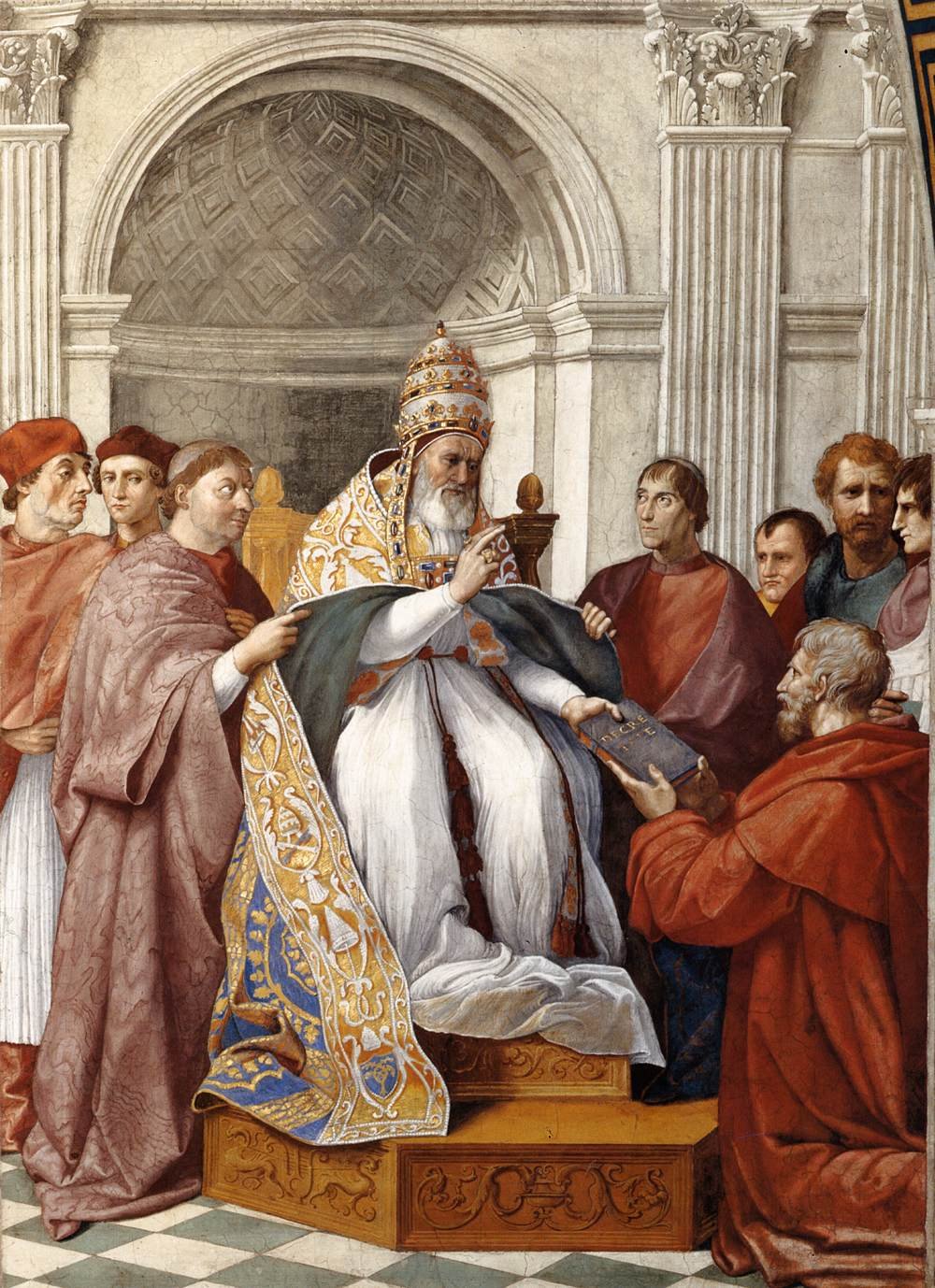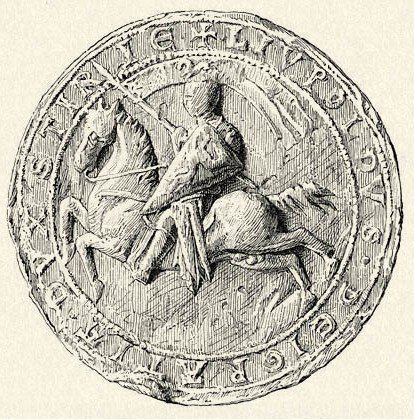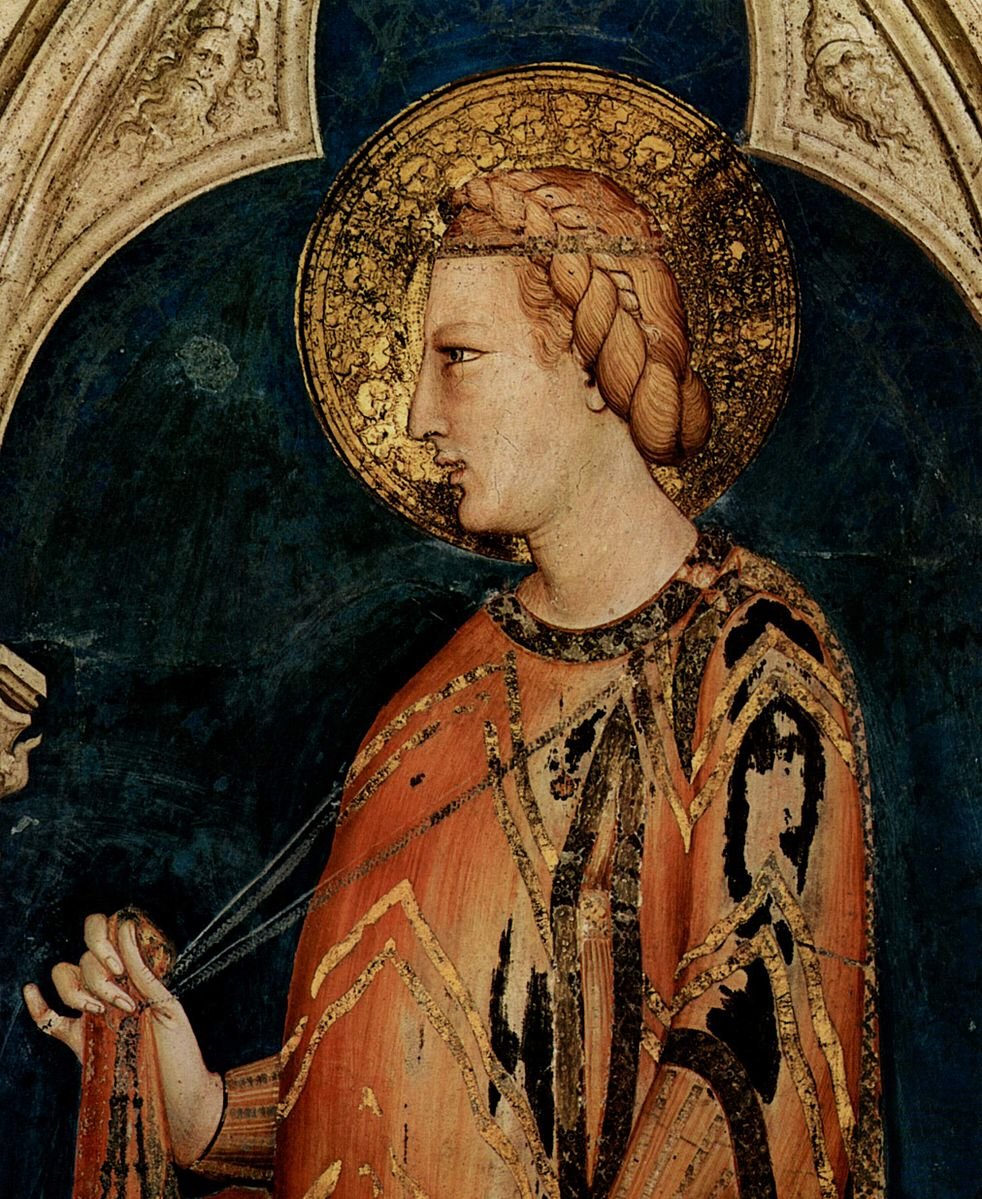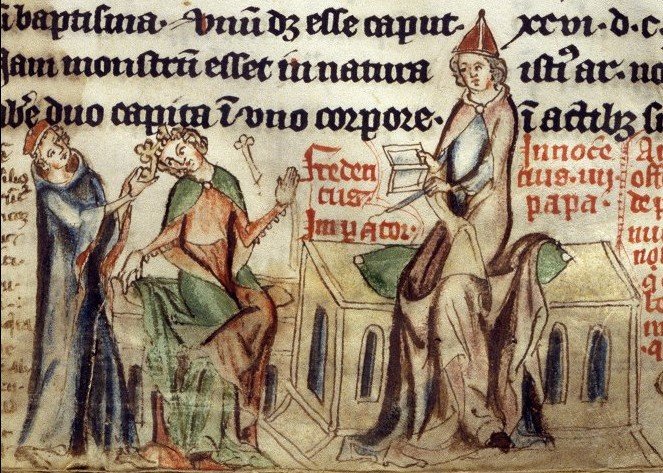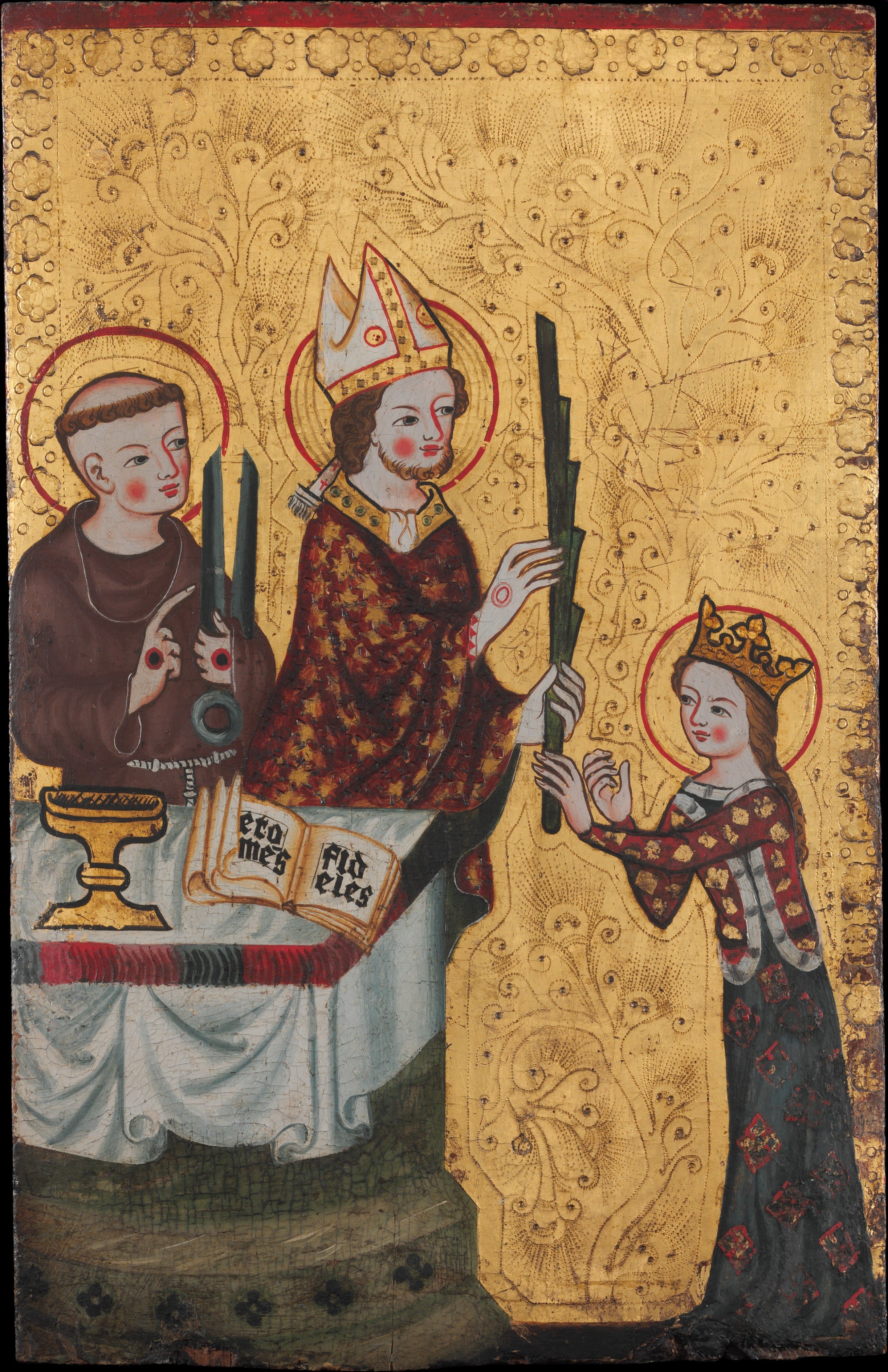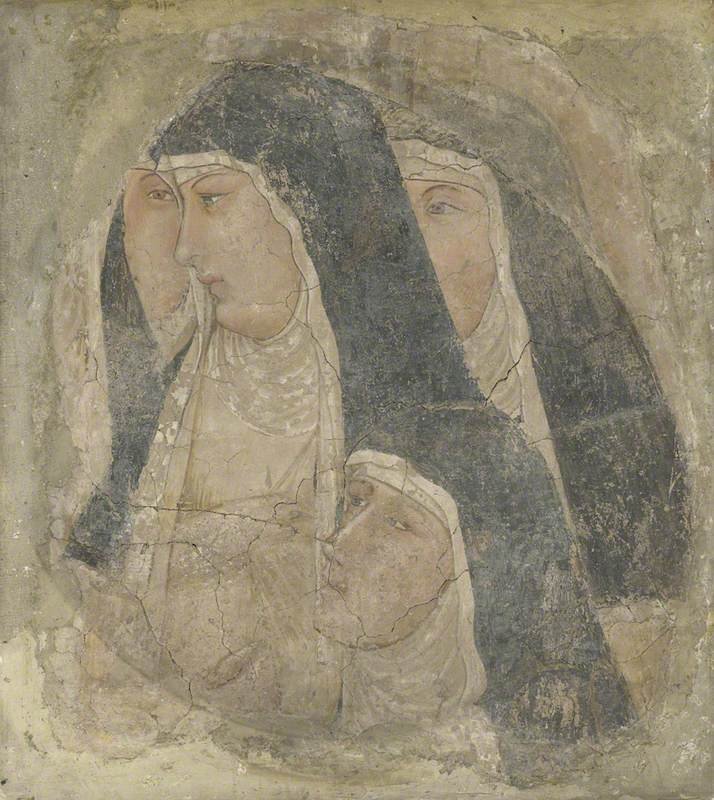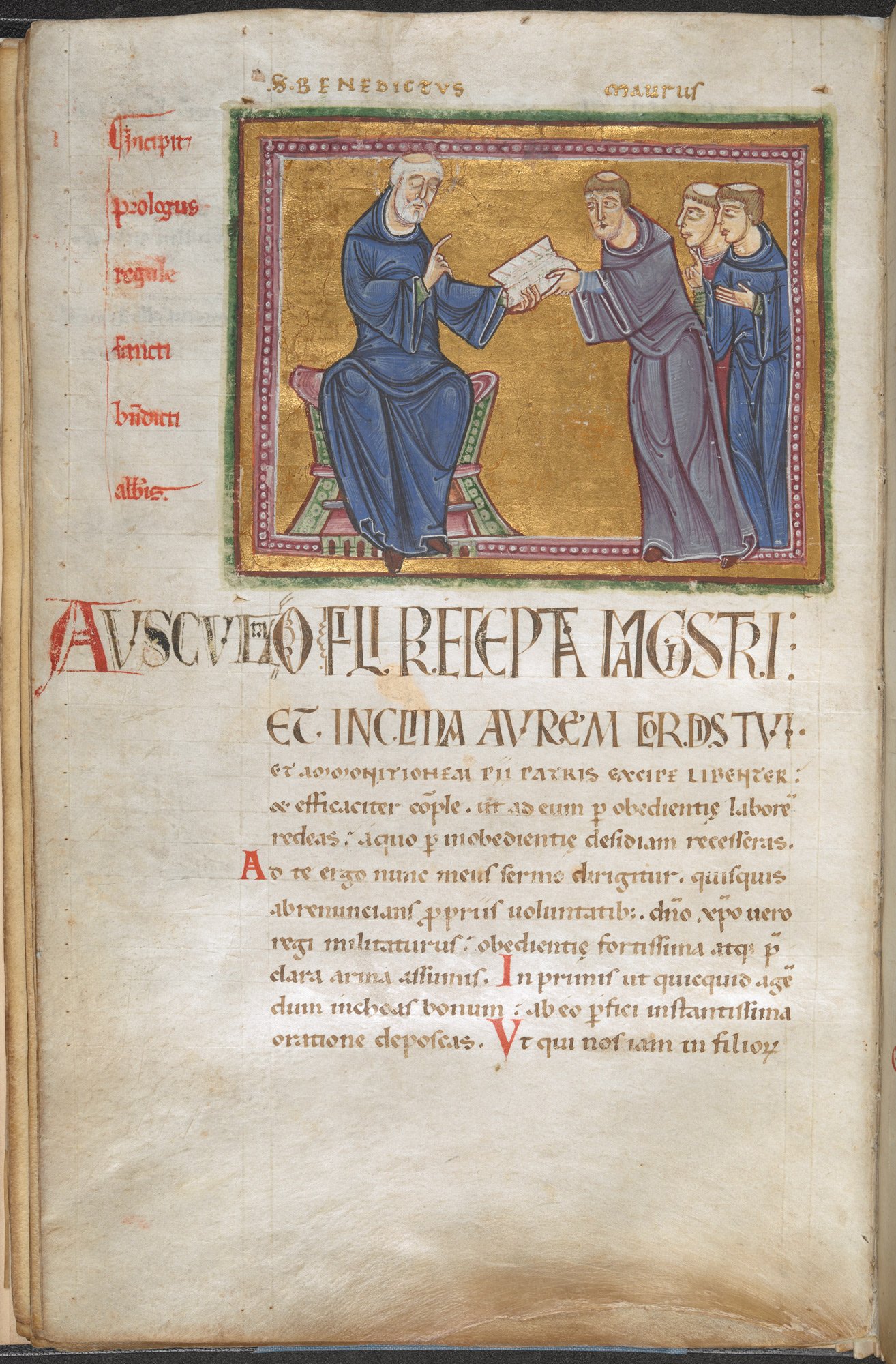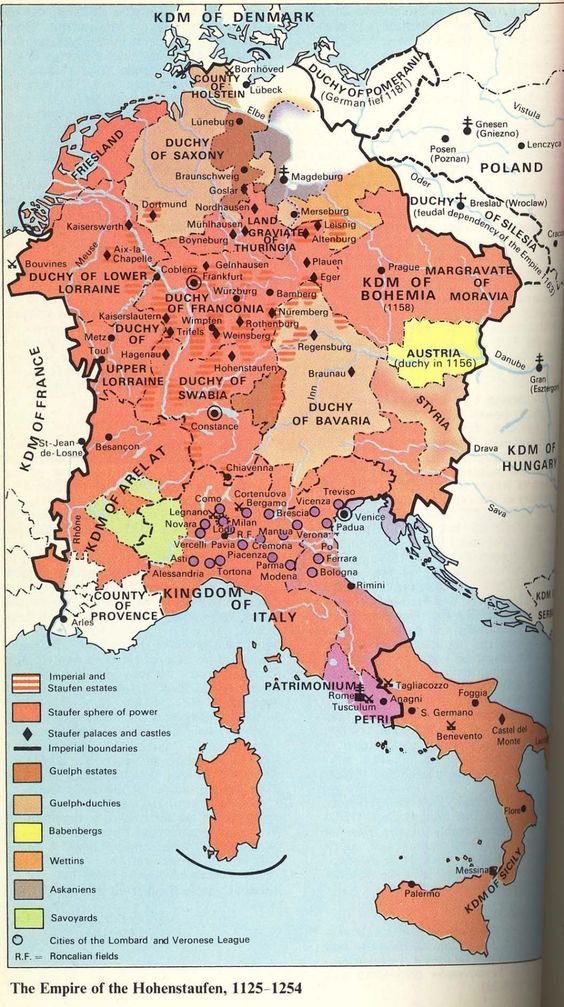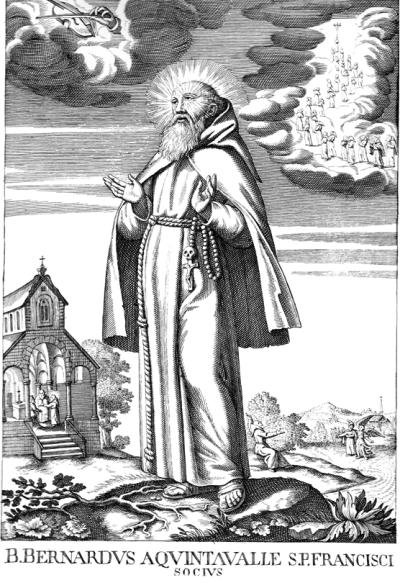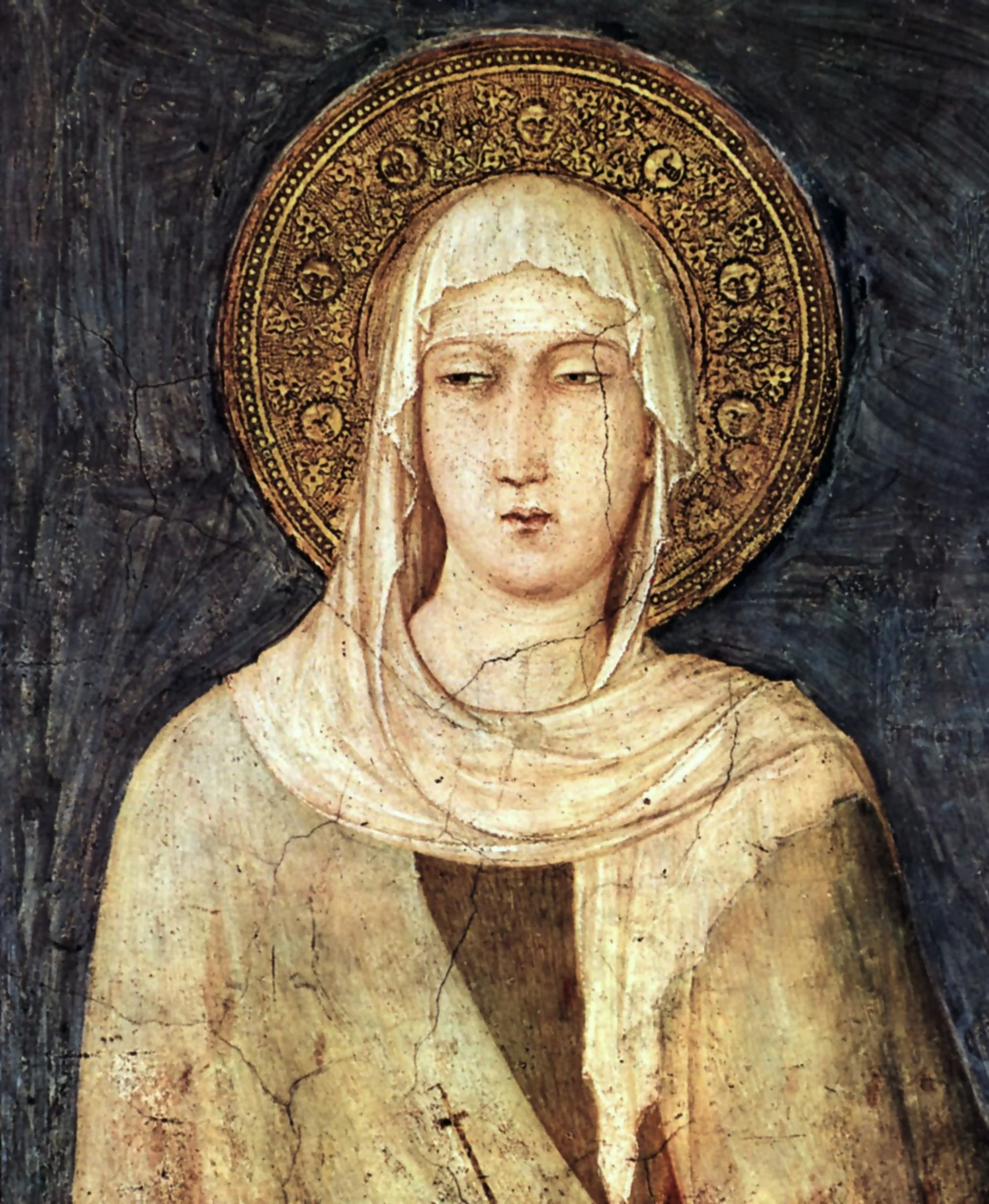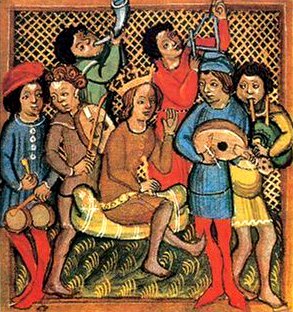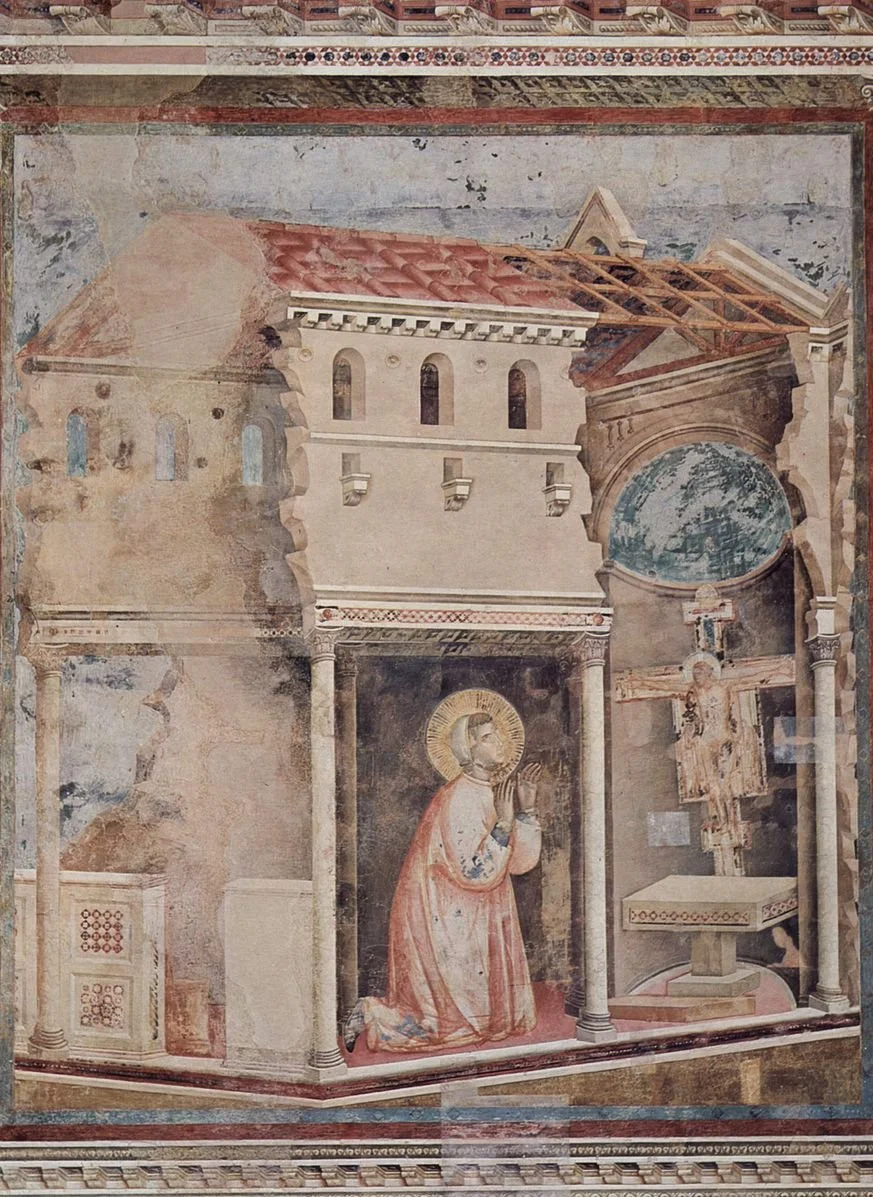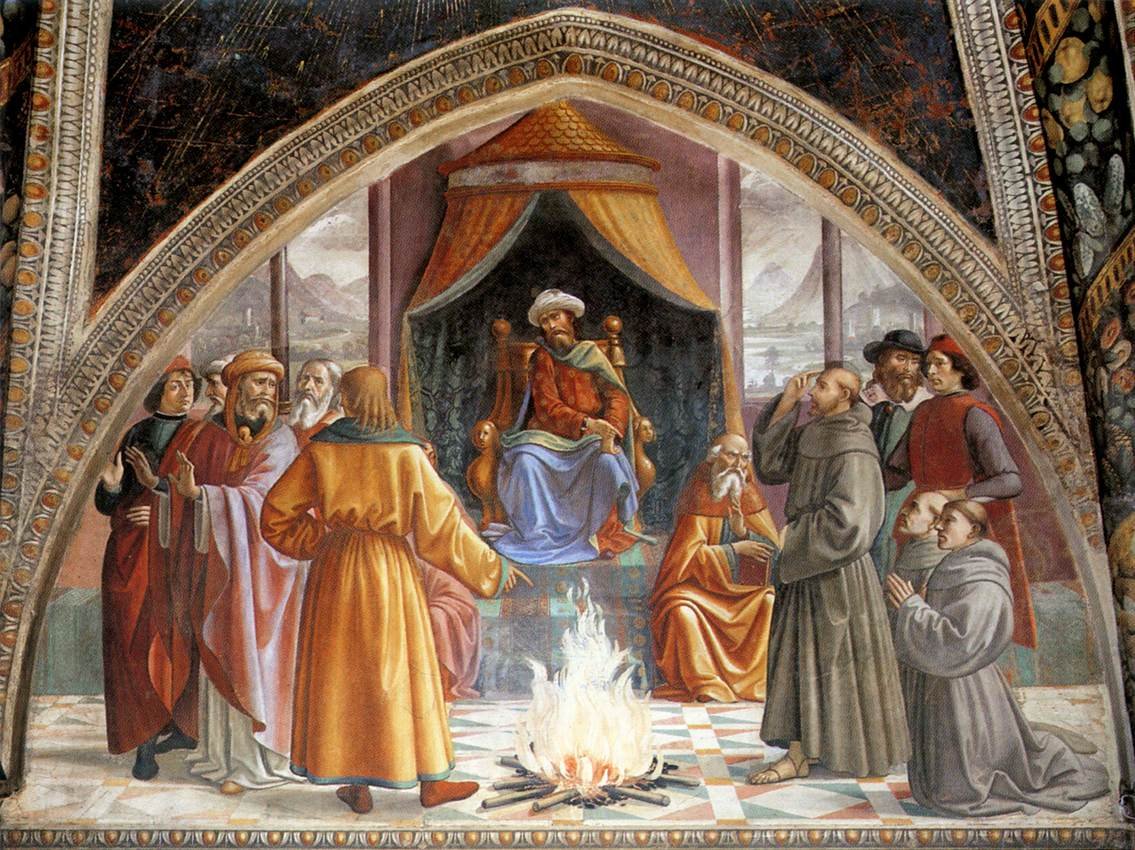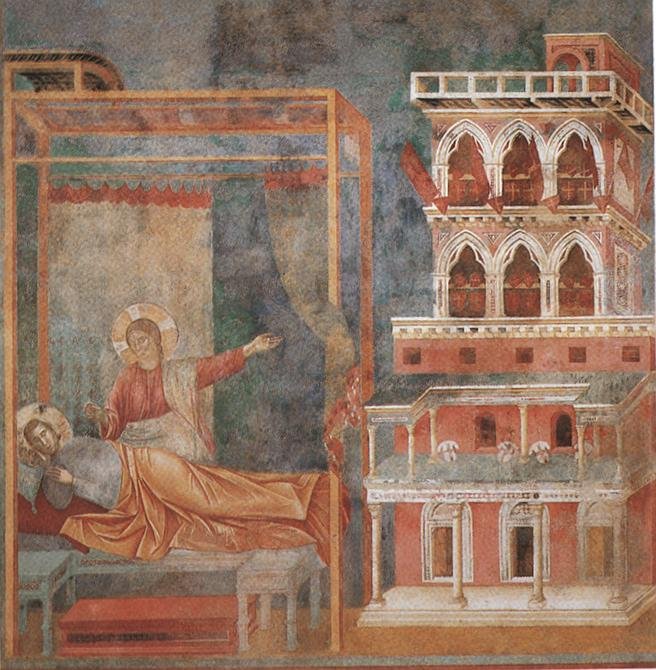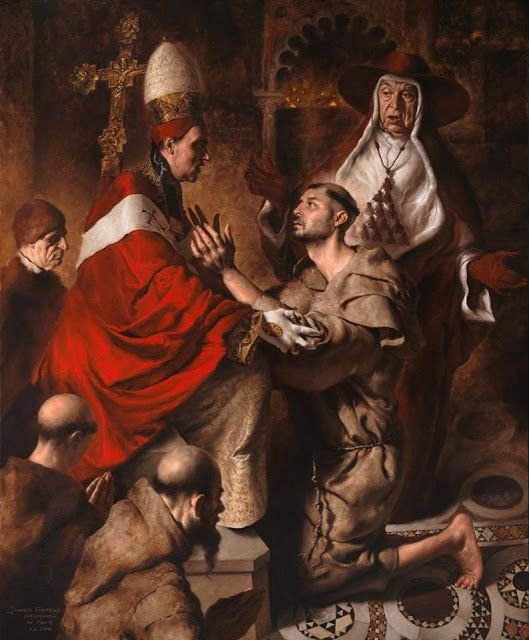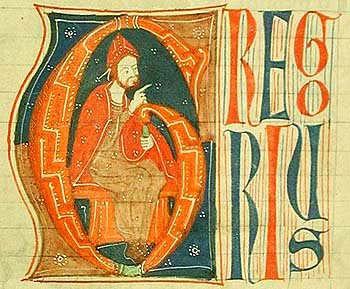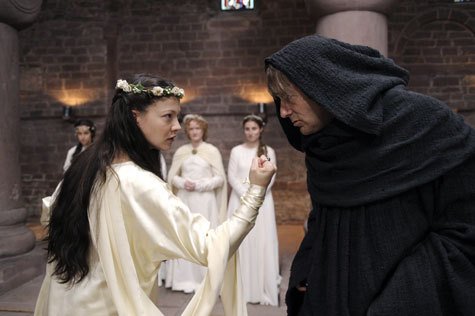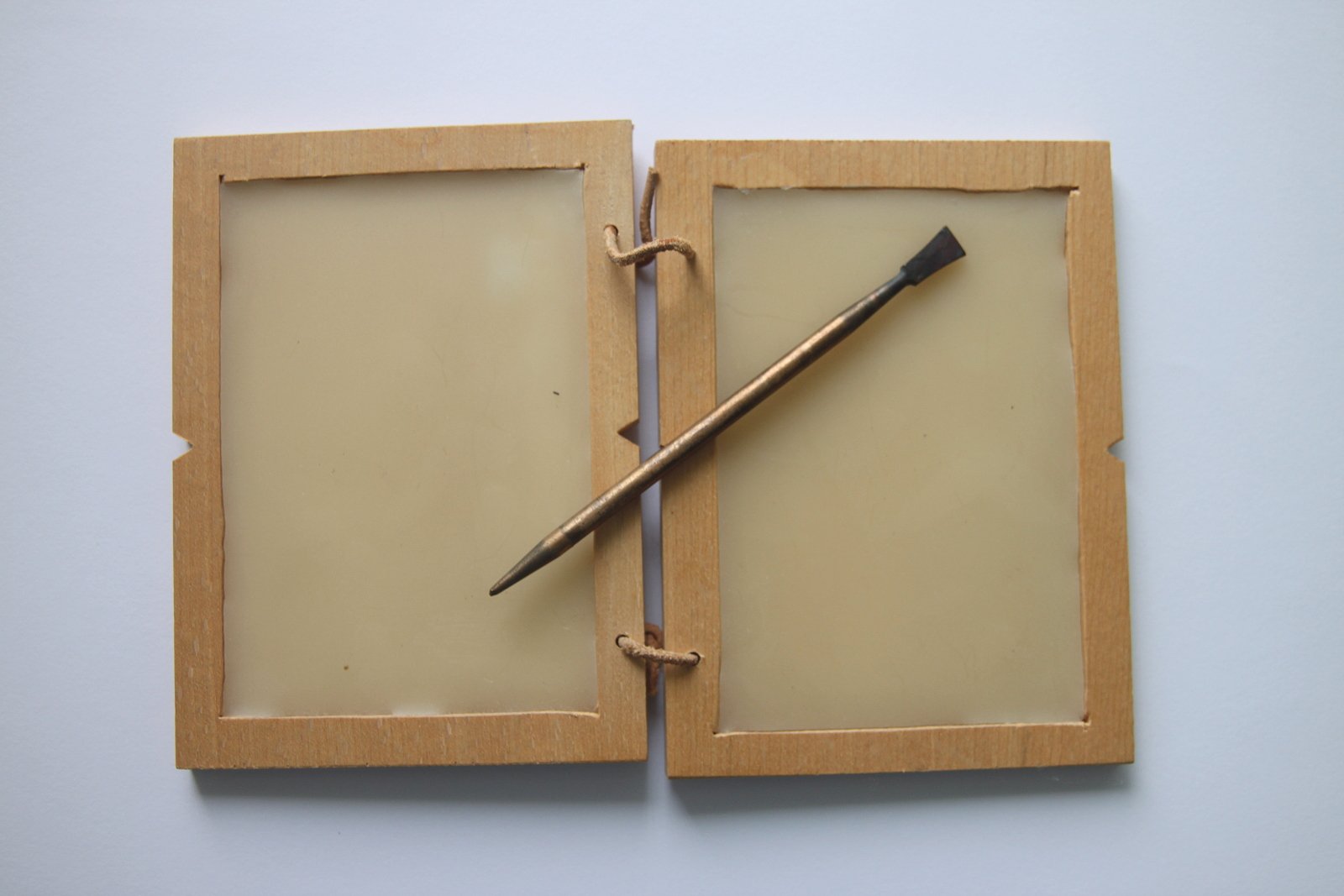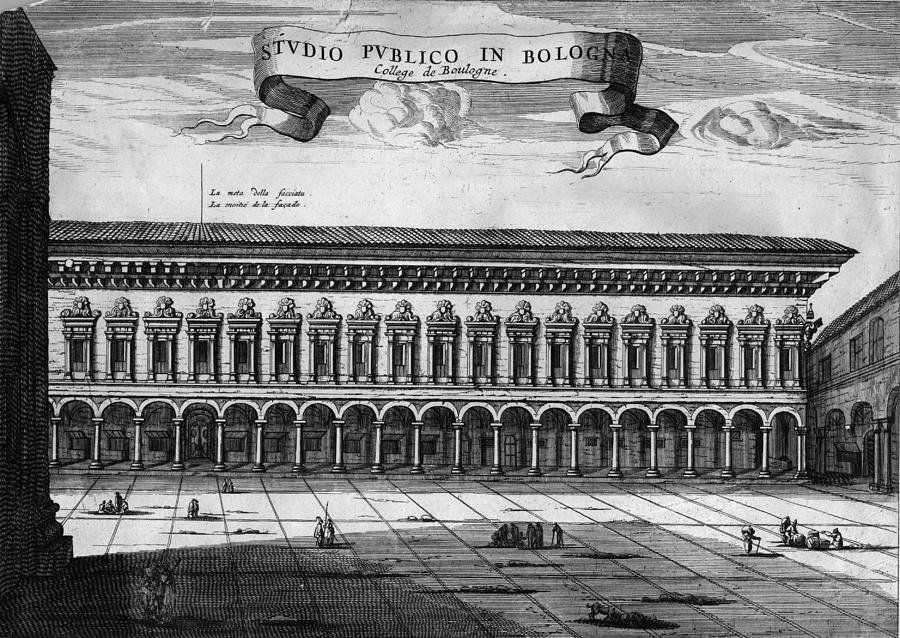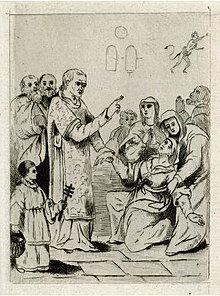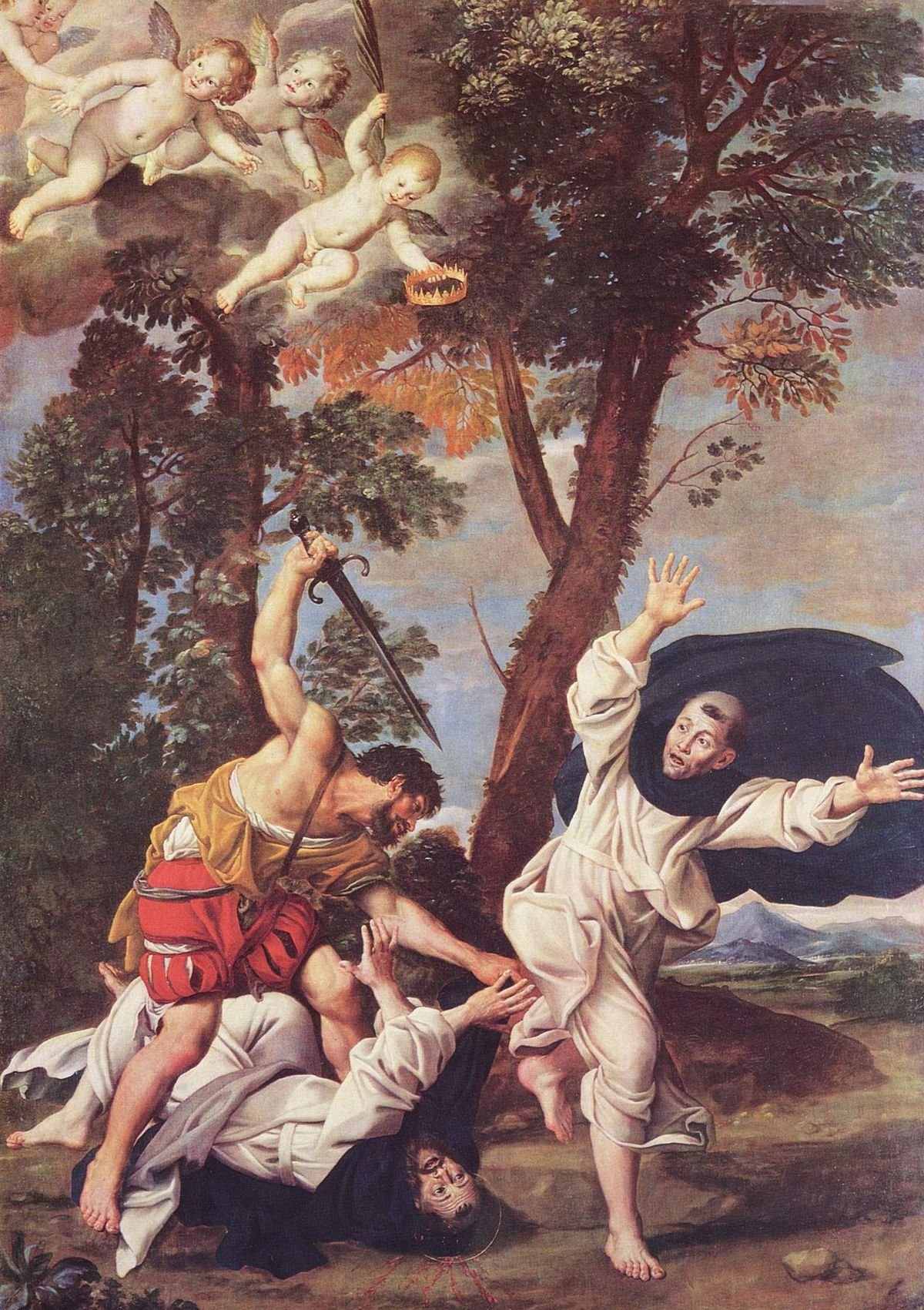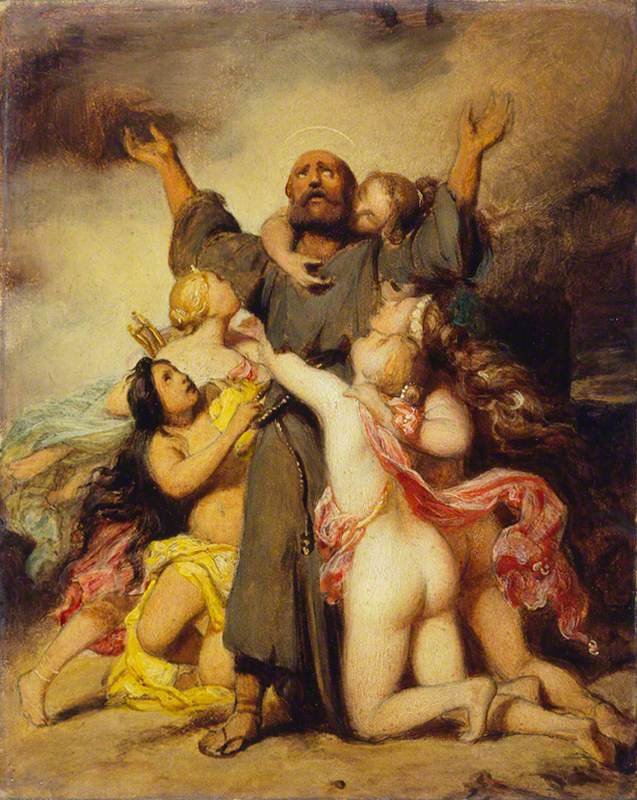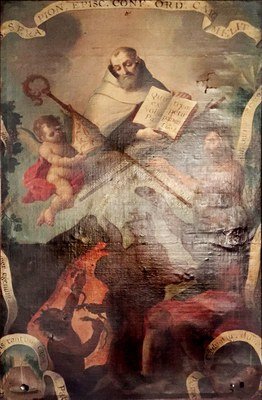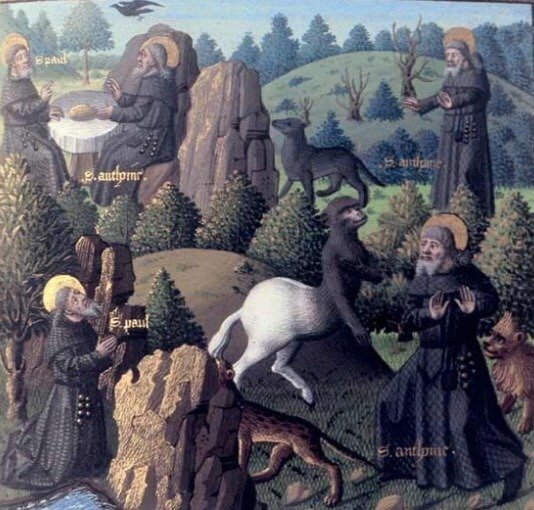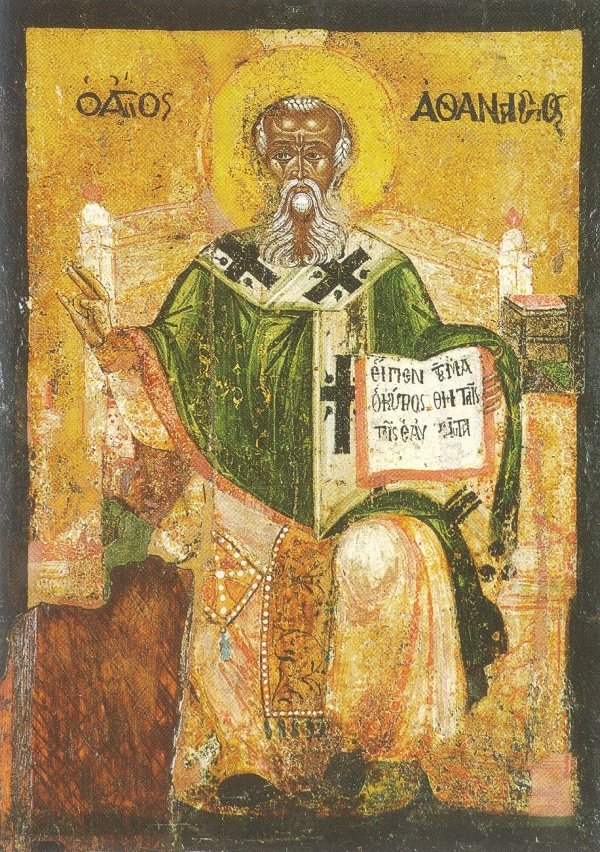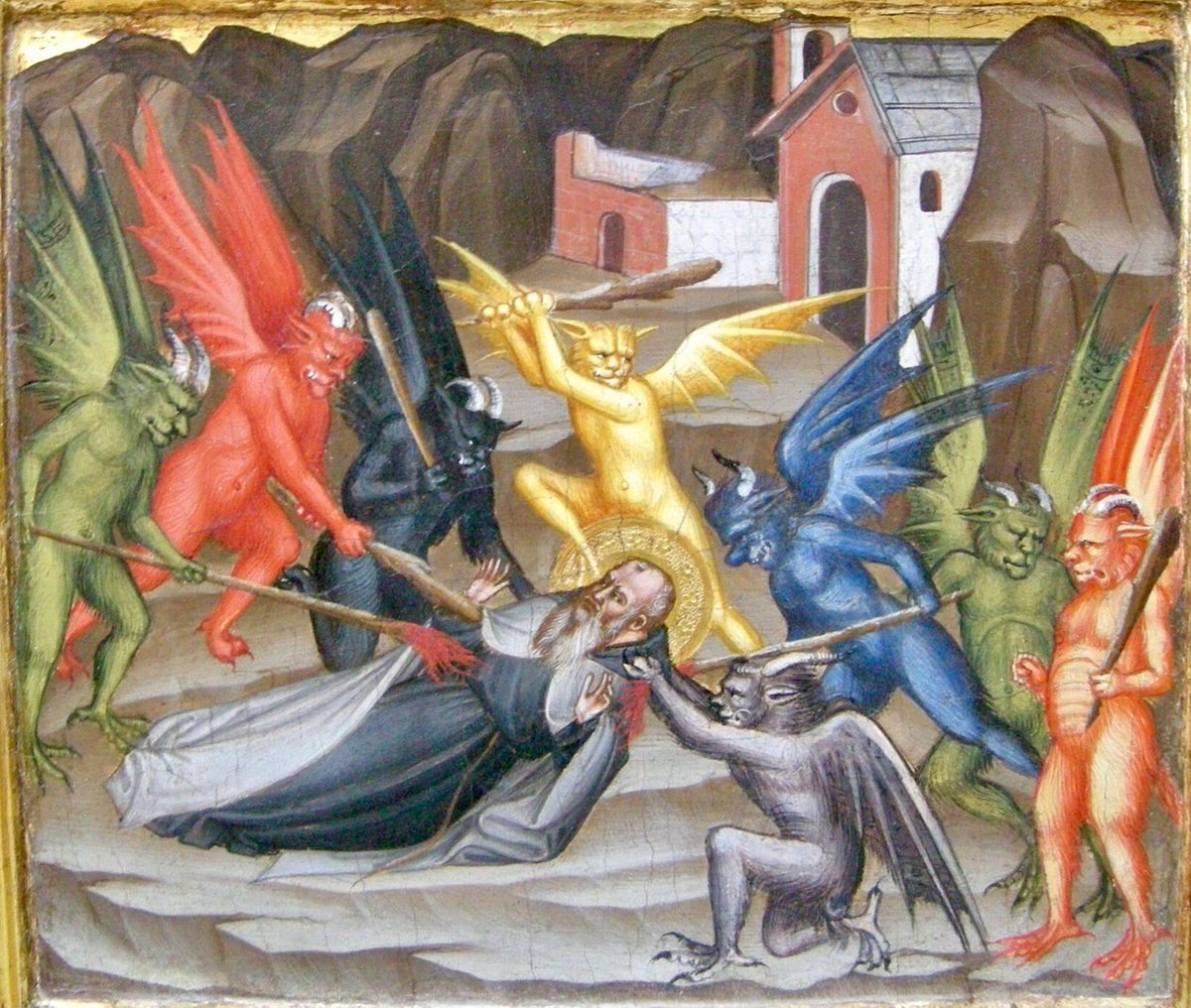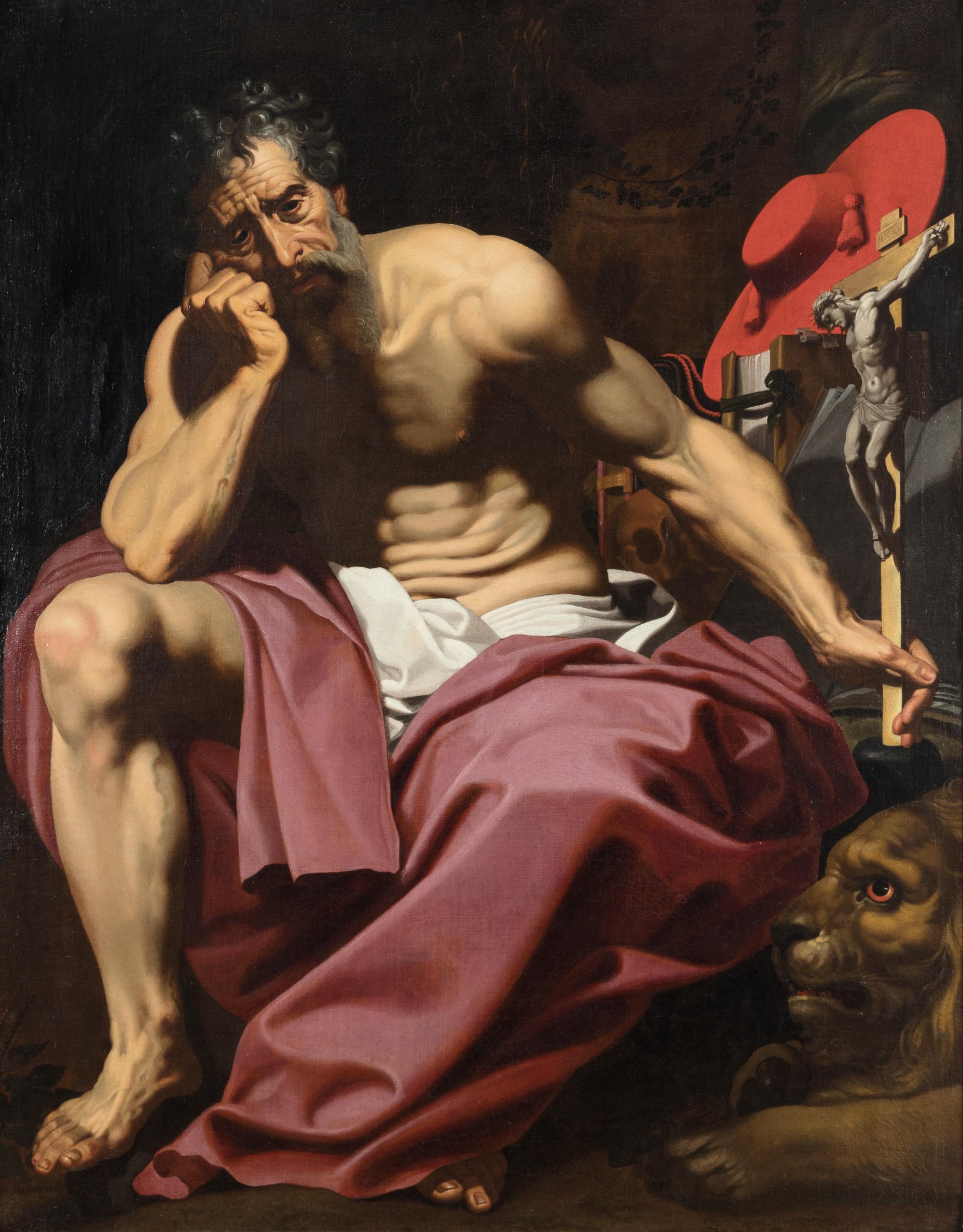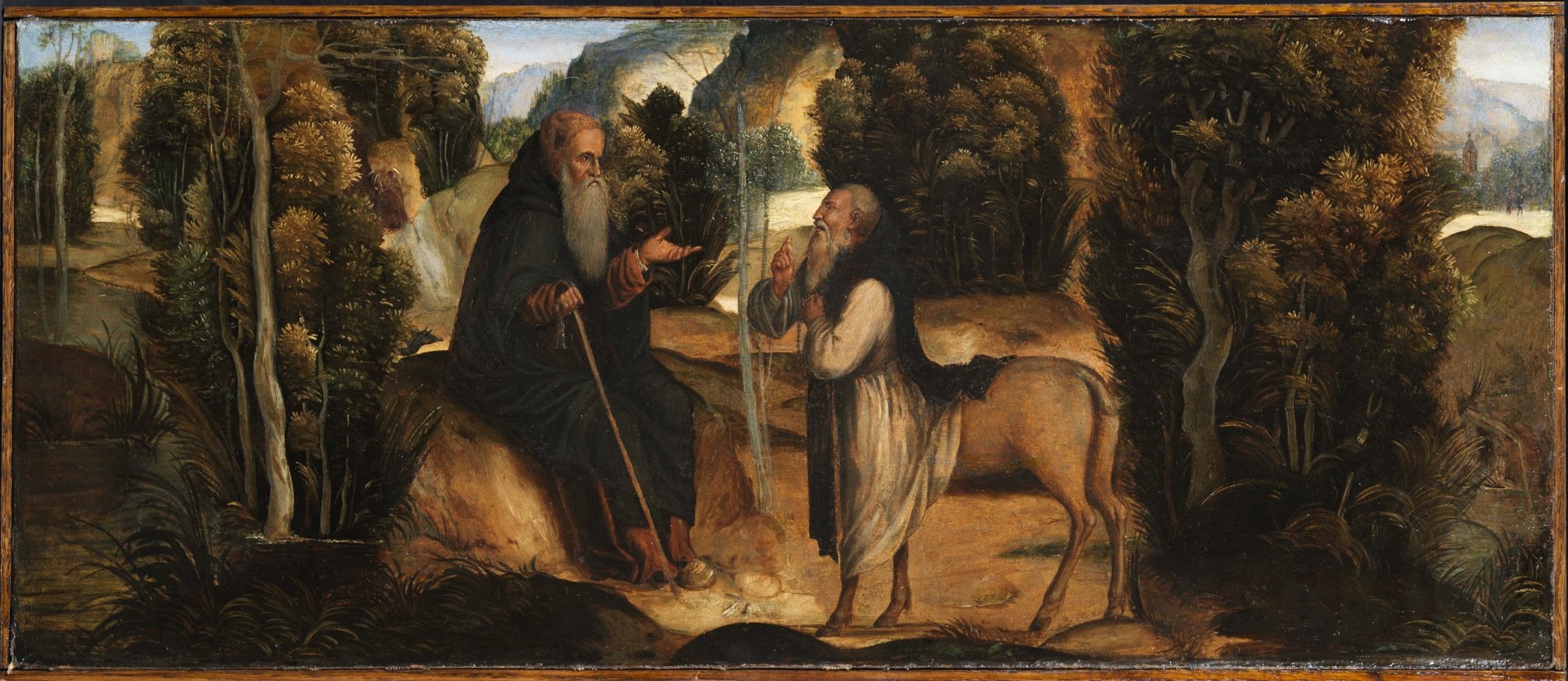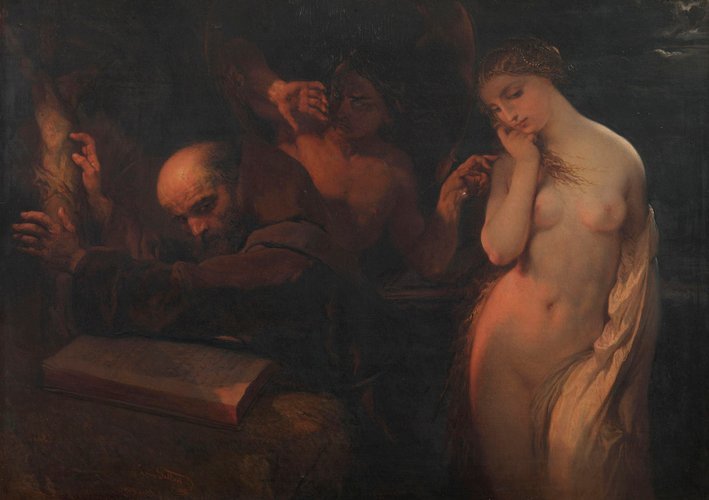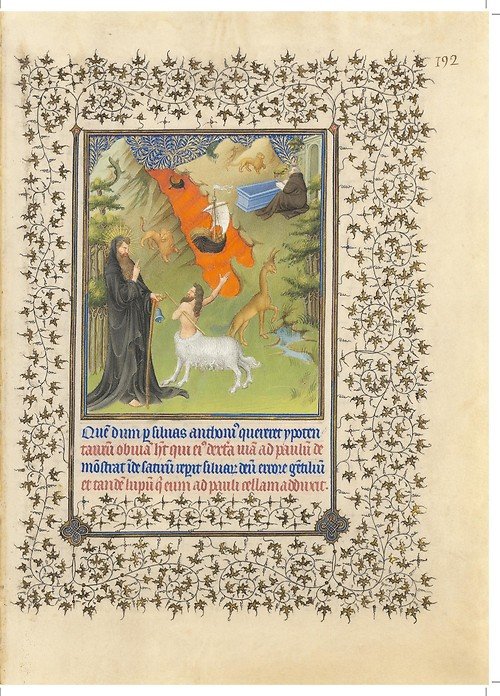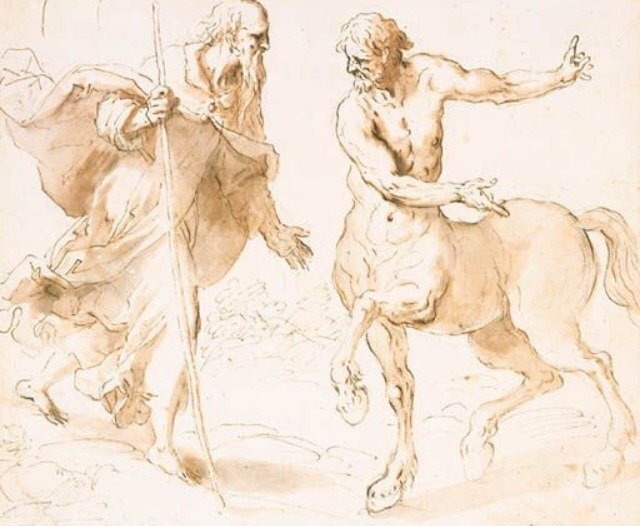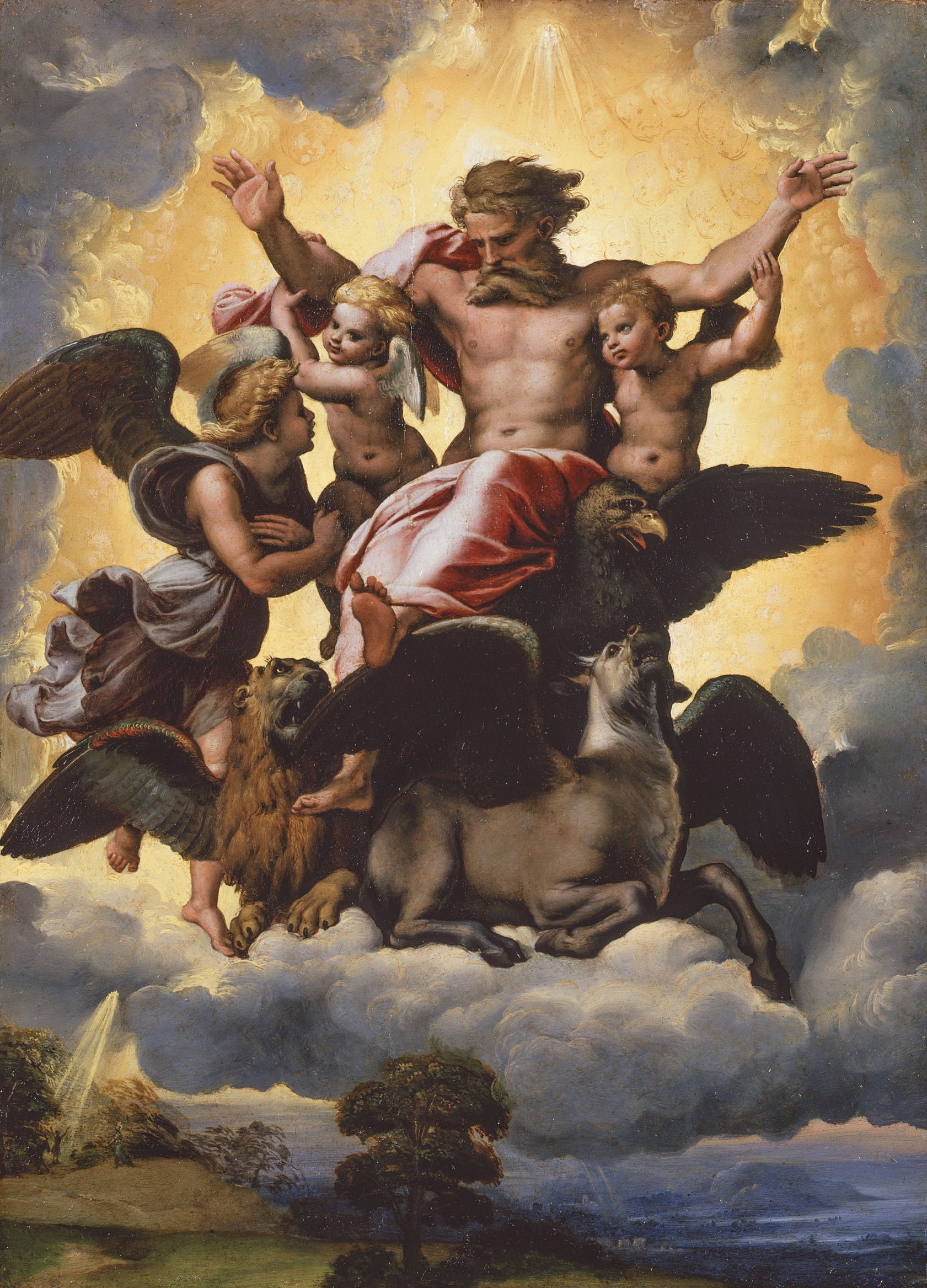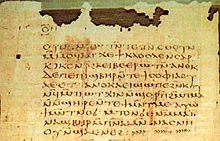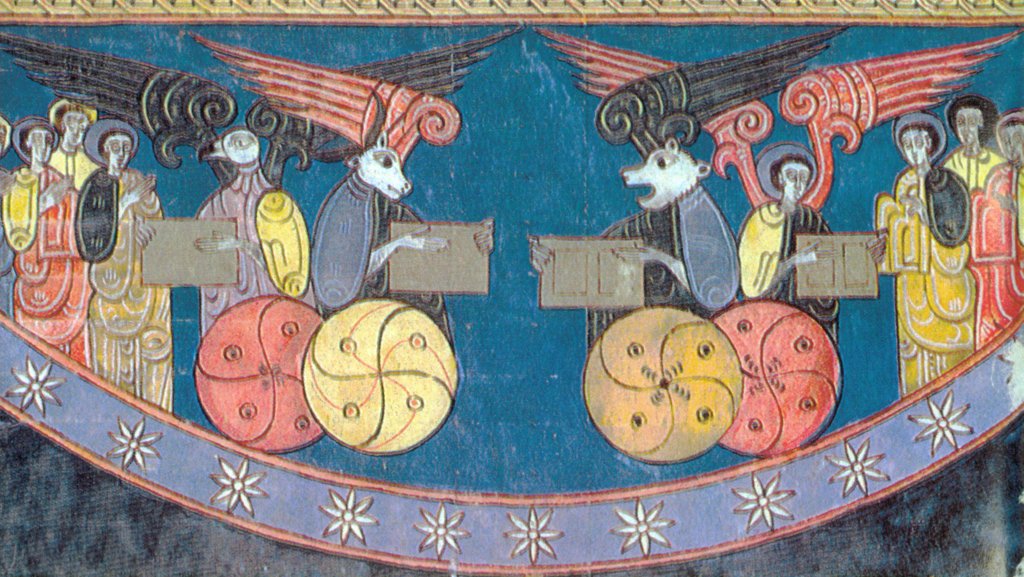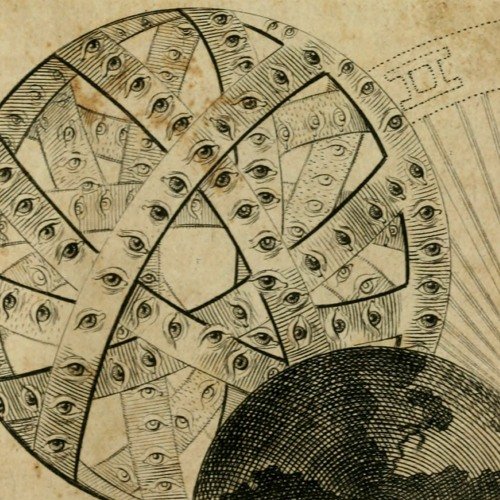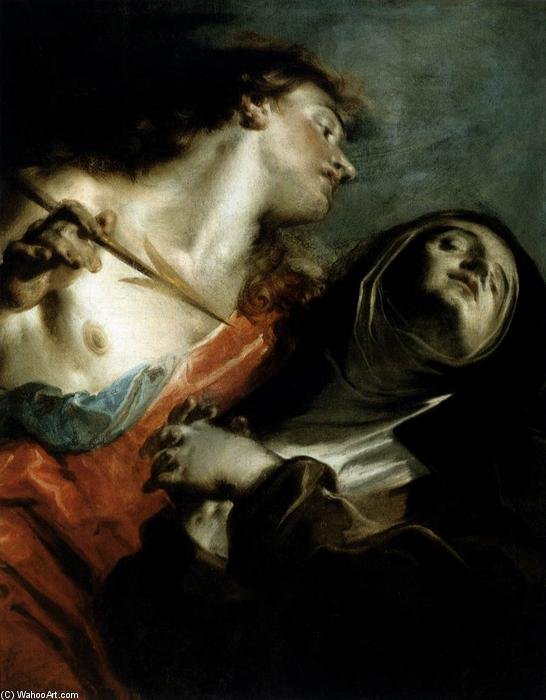
MYSTICS
Saint Podcast season 02 explores mystics: saints who had transcendental experiences with God. Many had divine visions and ecstatic visitations. A chosen few experienced stigmata, the wounds of Christ appearing miraculously on their bodies. Through their faith, some of these saints had the power to exorcise demons from the possessed, heal the sick - raise the dead!
016 Saint Clare the Mighty Abbess in the Shadows
Episode five in the Mystics series is about a saint who was devoted to Saint Francis’ rule to live in absolute poverty. She defied her aristocratic family, powerful bishops, and several popes to do just this. This saint is the first female founder of a monastic order. She was a celebrity in life and played a role in defining 13th-century European politics – all while confined within the walls of a monastery. She’s also the patron saint of television. This is the story of Saint Clare the Mighty Abbess in the Shadows.
Clare’s sister Catherine dragged away by their uncle Monaldo, painted by António de Oliveira Bernardes, 1697; Igreja de Santa Clara in Évora
A likely fictional scene of Clare and Francis and their followers having super at San Damiano, painted by Antoni Viladomat, 1723-33; Museu Nacional d'Art de Catalunya
Pope Gregory IX (formerly Cardinal Hugolino) by Raffaello Sanzio, 1510-11; Stanza della Segnatura at the the Vatican Museums
Contemporary carving of King Premysl Otakar I from the Saint George Convent in Prague
Saint Elizabeth of Hungary painted by Simone Martini,1322-26; Basilica of Saint Francis
14th-century manuscript depicting the excommunication of Holy Roman Emperor Frederick II by Pope Innocent IV; author unknown; Bodleian Library
Clare repelling attackers with the eucharist; Isodoro Arredondo, 1693; Museo del Prado
Bishop Guido hands Clare a palm frond on Palm Sunday, painted by an unknown German artist, c. 1360; The Met
A group of Poor Clares, painted by Ambrogio Lorenzetti, c. 1336-40; National Gallery
12th-century edition of the Rules of Saint Benedict from the Necrology from the Benedictine Abbey of St Gilles; British Library
Saint Agnes of Prague gives the Grandmaster a model of the church, painted by Nikolaus Puchner, 1482; Saint Vitus Cathedral
Bust of Holy Roman Emperor, Frederick II, by an unknown artist, c. 13th century; Museo Provinciale Campano
Conrad of Marburg from a 13th-century church window at Elisabeth Church, Marburg
The body of Saint Clare inside a wax effigy at the Basilica of Saint Clare. The skeleton can be seen from the other side, accessible only by the Poor Clares themselves.
Pope Honorius III painted by Leandro Bassano in the 16th century, Santi Giovanni e Paolo
Clare mourning the death of Francis, a fresco painted by Giotto in 1300 at the Basilica of Saint Francis
Queen Constance of Bohemia on the portal of the 13th-century Cistercian Abbey of Porta Coeli in Moravia
King Wenceslaus I of Bohemia from the 15th-century Codex Gelnhausen
The death of Clare painted by the Master of Heiligenkreuz, c. 1400/10; National Gallery of Art
Saint Clare (top right) stopping a wolf from attacking a girl, painted by Giovanni di Paolo, 1453/62. Photographed at the National Gallery exhibition Saint Francis of Assisi.
Resources
Books and articles used for research and/or referenced in this episode:
Clare of Assisi and the 13th-century Church by Catherine M. Mooney
The Privilege of Poverty: Clare of Assisi, Agnes of Prague, and the Struggle for a Franciscan Rule for Women by Joan Mueller
St. Clare of Assisi and St. Agnes of Prague: Their Lives Intertwined by the Four Letters by Wenyu Cai
Clare of Assisi: Gentle Warrior by Wendy Murray
014 Saint Francis the Wayward Stigmatic Parts I & II
Episode four in the Mystics series is about a saint who was born in the year 1181. He was a middle-class party boy who aspired to the upper-class sex, drugs, and rock and roll lifestyle of an aristocrat until a chance encounter with a leper changed him. His love for nature is commonly referenced, as are the bloody stigmata he bore on his body. The saint we know today, however, bears superficial resemblance to the man pieced together from historical evidence. This is Part I of the story of Saint Francis of Assisi the Wayward Stigmatic.
Francis giving away his mantle, a fresco by Giotto from 1295; Basilica of Saint Francis
Francis turning his back on the pursuit of material wealth and power - and renouncing his earthly father by Sasetta, 1437-44; National Gallery, London
Saint Benedict admitting Saints Maurus and Placidus into the Benedictine Order; Lorenzo Monaco, 1407-07, National Gallery London
The Humiliati accepting the Rule of Saint Benedict, painted by Simone di Crocifissi, c. 1200; Pinacoteca Nazionale Bologna
Saint Francis preaching - to humans and birds - painted by Benozzo Gozzoli, 1452; Museo di Montefalco
Francis casting out demons, painted by Benozzo Gozzoli, 1452; Museo di Montefalco
Saint Clare of Assisi, detail from a fresco by Simone Martini, 1322-26; Basilica of Saint Francis
Illustration of Frederick II meeting Sultan al-Kamil, from the 14th-century Nuova Cronica; Vatican Apostolic Library
The mystical marriage of Saint Francis with allegorical figures of Chastity, Poverty, and Obedience, 1437-44; Musée Condé
Giotto’s depiction of Francis receiving the stigmata with Brother Leo on the right. Painted before 1337 in the Basilica of Saint Francis.
An unusual painting by Bernardo della Gatta showing Brother Leo aware of the seraph - and an owl on the left. Painted around the year 1487, Church of Sant'Angelo al Cassero.
Saint Francis painted by Rubens, c. 1615; Art Institute Chicago
Saint Francis painted by Carlo Crivelli in 1476 for a polyptych at San Domenico. Note the raised, nail-like stigmata wound on his hand. National Gallery London.
Saint Francis points to the figure of Death, painted by Giotto before 1337 in the Basilica of Saint Francis.
14th-century Spanish translation of a French-Italian edition of the Song of Roland; Biblioteca Nazionale Marciana
Fresco likely by Giotto showing Francis at San Damiano, 1296-98; Basilica of Saint Francis
Giotto’s fresco depicting Saint Francis renouncing his worldly goods, including his clothes; 1295, Basilica of Saint Francis of Assisi
Francis before Pope Innocent III, Giotto, c. 1296-98; Basilica of Saint Francis
The vision of Pope Innocent III, painted by Fra Angelico, c. 1395–1455; Yale University Art Gallery
Pope Innocent III accepting the rule from Francis, painted by Sassetta, c. 1337-44; National Gallery London
Jan Siberechts’ Francis preaching to the animals, 1666; Royal Museum of Fine Arts Antwerp
Saint Francis meeting the young aristocrat, Chiara - and her transformation into Clare - in the 1997 Marvel comic book, Francis, Brother of the Universe: His Complete Life’s Story
The trial by fire painted by Domenico Ghirlandaio, 1482-85; Cappella Sassetti
Giotto’s painting of Lady Poverty with Francis (in black) and Christ between them, c. 1330; Basilica of Saint Francis
The incorrupt remains of the Blessed Thomas of Celano at the Church of Saint Francis in Tagliacozzo.
Francis receiving the stigmata by the Master of Staffolo, c. 1420; Philadelphia Museum of Art. Brother Leo is on the right.
Saint Francis and the seraph painted by El Greco, c. 1585-60; The Walters Art Museum
Saint Francis supported by an angel, painted by Orazio Gentileschi, c. 1607; Museo del Prado.
Saint Francis in prayer by Zurbarán between 1640-45; Museum of Fine Arts Boston
The death of Saint Francis, painted by Giotto, c. 1325; Basilica of Santa Croce
Text page from Lancelot, English, 2nd half of the 13th century: British Library
Francis’ vision of glory from a fresco by Giotto, 1295; Basilica of Saint Francis
Detail of the burning of lepers, at the beginning of chapter 7 of the French ‘Philip V' book. Attributed to the Follower of the Virgil Master, 13th-14th century; British Library.
The crucifix at San Damiano said to be the very one that spoke to Francis, created by an unknown Umbrain artist c. 1100; Basilica of Saint Clare
Bishop Guido covering up a naked Francis, painted by Benozzo Gozzoli, 1452; San Francesco, Montefalco
Interior of Portiuncula, Papal Basilica of Saint Mary of the Angels in Assisi
Trailer for Brother Sun, Sister Moon; Franco Zeffirelli, 1972
Pope Innocent III from a mid-13th-century fresco at the Monastery of Sacro Speco of Saint Benedict
Pope Innocent III’s dream (left), Francis and his brothers before Innocent III (right). painted by Benozzo Gozzoli, 1452; Museo di Montefalco.
Saint Francis and Saint Clare having dinner at San Damiano, painted by Antoni Viladomat i Manalt, c. 1724-33; Museu Nacional d'Art de Catalunya
Saint Francis meets Al-Kamil, painted by Benozzo Gozzoli, 1452; Museo di Montefalco. Note the embers Francis stands on.
Giotto’s painting of the trial by fire, 1295; Basilica of Saint Francis
Saint Francis before Pope Honorius III, painted by Giotto, before 1337 at the Basilica of Saint Francis
Historiated capital featuring Pope Gregory IX aka Hugolino. From manuscript M III 97, 122rb, ca. 1270; Universitätsbibliothek Salzburg.
Saint Francis receiving stigmata by Jan van Eyck, c. 1430-32; Galleria Sabauda. Note the wounds on Francis’ feet. Brother Leo is asleep.
Engraving by Cornelis Cort after Girolamo Muziano, 1567; The Met
Caravaggio in ecstacy, painted by Caravaggio in 1594; Wadsworth Atheneum Museum of Art
Canticle of the Creatures or Canticle of the Sun
Most High, all-powerful, good Lord,
Yours are the praises, the glory, the honor, and all blessings.
To You alone, Most High, do they belong,
and no man is worthy to mention Your name.
Praised be You, my Lord, with all your creatures;
especially Brother Sun, who is the day, and through whom You give us light.
And he is beautiful and radiant with great splendor,
and bears a likeness to You, Most High One.
Praised be You, my Lord, through Sister Moon and the stars;
in heaven You formed them clear and precious and beautiful.
Praised be You, my Lord, through Brother Wind,
and through the air, cloudy and serene,
and every kind of weather through which You give sustenance to Your creatures.
Praised be You, my Lord, through Sister Water,
which is very useful and humble and precious and chaste.
Praised be You, my Lord, through Brother Fire,
through whom You light the night;
and he is beautiful and playful and robust and strong.
Praised be You, my Lord, through Sister Mother Earth,
who sustains us and governs us and who produces
varied fruits with colored flowers and herbs.
Praised be You, my Lord,
through those who give pardon for Your love,
and bear infirmity and tribulation.
Blessed are those who endure in peace
for by You, Most High, they shall be crowned.
Praised be You, my Lord,
through our Sister Bodily Death,
from whom no living man can escape.
Woe to those who die in mortal sin.
Blessed are those whom death will find in Your most holy will,
for the second death shall do them no harm.
Praise and bless my Lord,
and give Him thanks,
and serve Him with great humility.
Resources
Check out Stephen Vesecky’s music on SoundCloud, as well as Louie Stowell’s website. And here is a link to the National Gallery in London’s upcoming exhibition about Saint Francis.
Books and articles used for research and/or referenced in this episode:
Reluctant Saint: Life of Saint Francis of Assisi by Donald Spoto
St. Francis of Assisi by G.K. Chesterton
The Legend of the Three Companions by unknown
Francis of Assisi: The Life and Afterlife of a Medieval Saint by Andre Vauchez
Sacred Views of Saint Francis by Cynthia O. Ho, Kathleen W. Peters, John McClain, J. Ross Peters
The Lady Poverty: A XIII Century Allegory by unknown
Francis of Assisi: The Essential Writings by Jon M. Sweeney
013 Saint Hildegard of Bingen the Mystical Polymath
Episode three in the Mystics series is about a 12th-century author composer, theologian, naturalist, and exorcist. She began life as an oblate, a child who was donated irrevocably to the church by her wealthy parents, sealed up in a cell for life. How she emerged to become one of the most sought after advisors to bishops, kings, and popes is incredible, especially so given the stringent restrictions that greatly narrowed the possibilities open for women. This is the story of Saint Hildegard of Bingen the Mystical Polymath.
Perceval meets with his anchorite aunt in an illumination from Prose Tristan, c. 1450-1460, via Initiale, Catalog of Illuminated Manuscripts. Note the anchorite’s cell with barred windows.
18th-century engraving of Pope Eugenius III from the Mary Evans Picture Library
Engraving of Elisabeth of Schonau from the Austrian National Library
13th-century illustration showing Hildegard of Bingen recording a vision on a wax tablet with Volmar to her left and the beloved Richardis to her right; Biblioteca Statale, Lucca
A selection of contemporary performances of Hildegard of Bingen’s music
20th-century copy of an image of The Exit of the Soul from Scivias, reproduced in Hildegard von Bingen: A Journey into the Images by Sara Salvadori
20th-century copy of an image of The End Times, reproduced in Hildegard von Bingen: A Journey into the Images by Sara Salvadori
Saint Benedict hands his Rule binding all monks in his order to Saint Maurus, from a 12th-century manuscript at the British Library
Contemporary piece depicting a young Hildegard meeting Jutta, Eibingen Abbey
15th-century illustration showing the expulsion of the Cathars from Carcassonne during the Albigensian Crusade in southern France; British Library
A playlist of contemporary performances of Hildegard of Bingen’s music
2016 performance of Ordo Virtutum at Saint John’s Cathedral in Los Angeles
20th-century copy of an image of Synagogue from Scivias, reproduced in Hildegard von Bingen: A Journey into the Images by Sara Salvadori
The enclosure of an anchoress by a bishop from an illumination from the Pontifical (MS 079), p.200, c. 1400-1410; The Parker Library, Corpus Christi College, Cambridge
The oldest surviving copy of the Rule of Saint Benedict, from the 8th-century, Bodleian Library
15th-century illustration of Pope Alexander III from the Nuremberg Chronicle, c.1493
Artist Miho Kuroyanagi uses traditional methods to apply gold leaf to illustrations. Follow MedievalPainter on Instagram. And here is a link to Miho's website.
20th-century copy of an image of Hildegard and Volmar from the introduction of Scivias, reproduced in Hildegard von Bingen: A Journey into the Images by Sara Salvadori
20th-century copy of an image of The End Times from Scivias, reproduced in Hildegard von Bingen: A Journey into the Images by Sara Salvadori
20th-century copy of an image of The Five Virtues from Scivias, reproduced in Hildegard von Bingen: A Journey into the Images by Sara Salvadori
Resources
Check out Tania Donald’s You Tube Channel, Tengy Talks TV and Movies here.
Books and articles used for research and/or referenced in this episode:
Sister of Wisdom: St. Hildegard's Theology of the Feminine by Barbara Newman
Hildegard of Bingen: A Visionary Life by Sabina Flanagan
Hildegard of Bingen: A Woman of Her Age by Fiona Maddocks
Hildegard von Bingen: A Journey into the Images by Sara Salvadori
Hildegard of Bingen by Honey Meconi
St. Hildegard, Doctor of the Church, and the Fate of Feminist Theology by Barbara Newman
Acercamiento a las emociones medievales: dos cartas de Hildegard de Bingen by María Eugenia Góngora
“For God Distinguishes the People of Earth as in Heaven”: Hildegard of Bingen’s Social Ideas by Sabina Flanagan
Hildegard von Bingen's Physica: The Complete English Translation of Her Classic Work on Health and Healing by Priscilla Throop
Book of Divine Works and Letters: With Letters and Songs by Matthew Fox
A Theophany of the Feminine: Hildegard of Bingen, Elisabeth of Schönau, and Herrad of Landsberg by Ann Storey
012 Saint Peter of Verona the Exorcist
The second episode in the Mystics series is about a 13th-century Dominican friar. Although not strictly speaking a mystic, many miracles are attributed to this saint. He’s a divine healer of sickness. He’s brought the dead back to life. He controls the weather. And it’s said that he cast out numerous demons from the bodies of the possessed. This is the story of Saint Peter of Verona the Exorcist – and a history of exorcism in the Catholic Church.
14th-century altarpiece of Saint Peter of Verona painted by an unknown artist; Museu Nacional d'Art de Catalunya
15th-century illustration of the expulsion of the Cathars from Carcassonne during the Albigensian Crusade in southern France; British Library
An illustration of the death of Mani from a 1315 copy of the Demotte Shahnameh, artist unknown; Riza Abbasi Museum
Saint Dominic painted by Claudio Coello, c. 1685; Museo del Prado
Saint Peter and the miracle of the cloud from a fresco by Vincenzo Foppa, c. 1468; Basilica of Sant'Eustorgio
Bust of Frederick II, king of the Kingdom of Jerusalem, Kingdom of Naples, and Germany, Holy Roman Emperor, c. 13th century; Museo Provinciale Campano, Capua
The martyrdom of Saint Peter of Verona and Father Dominic, painted by Giovanni Bellini, c. 1505-07; National Gallery
A portrait of Friar Angelo Ferretti as Saint Peter of Verona, painted by Lorenzo Lotto in 1549; Harvard Art Museums
Giorgio Vasari’s 1570 martyrdom of Saint Peter of Verona featuring Carino and his assistant Poro (aka Il Magnifico’) dressed as Roman centurions; Kunsthistorisches Museum
14th-century fresco of Christ exorcising demons by an unknown artist, Visoki Dečani Monastery
Frontispiece and incipit from an 8th-century edition of the Gelasian Sacramentary from Germany; Vatican Apostolic Library
Franciscan Friars witness a Cathar Consolamentum, a baptism rite, in horror; 2nd half of the 13th century, Bibliothèque Nationale de France
Andfrea di Bonaiuto’s 14th-century allegory of the triumph of the Church and the Dominican order. Saint Peter of Verona appears several times in the fresco along with Saints Dominic and Thomas; Santa Maria Novella
Galileo standing before the Inquisition in Rome, painted by Joseph-Nicolas Robert-Fleury in 1847; Louvre
Antonio Vivarini’s painting showing Saint Peter performing a miraculous healing, 1450s; The Met
Saint Peter of Verona with the Madonna and Child and a donor, painted by Lorenzo Lotto in 1503; Museo di Capodimonte
Ambrogio Bergognone’s Saint Peter of Verona with a kneeling donor, painted c. 1485; Louvre
Carino dispatching Peter while Father Dominic attempts escape, painted by Domenichino in the 17th century; Pinacoteca Nazionale Bologna
The falcastrum wielded by Carino; Santuario di San Pietro Martire di Seveso
6th-century mosaic of the exorcism of the Gerasene demoniac from the Basilica of Sant'Apollinare Nuovo
Witches presenting wax dolls to the devil, featured in The History of Witches and Wizards (1720); Wellcome Library
Clip from The Exorcist, 1973
Fresco created between 1366-67 depicting Dominican friars combating heresy, likely confronting Cathars; Cappellone degli Spagnoli, Santa Maria Novella
13th-century Chinese Manichaean silk painting depicting the sermon on Mani's Teaching of Salvation, artist unknown; Museum Yamato Bunkakan
Dominican Blesseds from an altarpiece made for the high altar of San Domenico, Fiesole, by Fra Angelico, c. 1423-24; National Gallery
Pope Gregory IX in a manuscript miniature c. 1270; Universitätsbibliothek Salzburg
Saint Peter of Verona exorcising a statue of the Madonna and Child; from a fresco by Vincenzo Foppa, c. 1468, Basilica of Sant'Eustorgio
Pope Innocent IV sends Dominicans and Franciscans on a mission to convert the Tartars, from Vincent of Beauvais’ 15th-century Le Miroir Historial (Vol. IV), illustrated by the Master of the Cité des Dames; Bibliothèque Nationale de France
Carlo Crivelli’s Saint Peter of Verona, 1476; National Gallery
The skull of Saint Peter of Verona is kept at the Basilica of Saint Eustorgius in Milan, where it’s on view on the Sunday closest to his feast day, 29 April.
The body of Carino is kept under this contemporary sculpture at Chiesa di San Martino
Witch pictured feeding her familiars with blood, in A Rehearsall both Straung and True, of Hainous and Horrible Actes Committed by Elizabeth Stile (1579); British Library
The horoscope of the Persian Timurid ruler Iskandar Sultan, 1411; Wellcome Collection
Resources
For more music by Stephen Vesecky, check out his SoundCloud page here. And click here for Fahrenheit Press’ website.
Books and articles used for research and/or referenced in this episode:
Angels and Demons: The Teaching of the Lateran by Paul M. Quay
The Devil Within: Possession and Exorcism in the Christian West by Brian Levack
Discerning Spirits: Divine and Demonic Possession in the Middle Ages by Nancy Mandeville Caciola
Exorcism and Enlightenment: Johann Joseph Gassner and the Demons of Eighteenth-Century Germany by H. C. Erik Midelfort
The Assassin-Saint: The Life and Cult of Carino of Balsamo by Donald S. Prudlo
A History of Exorcism in Catholic Christianity by Francis Young
The Golden Legend by Jacobus de Voragine
011 Saint Anthony of Egypt the Mystic in the Desert
The first Mystics episode is about a saint called the Father of Monks. He’s one of the first Desert Fathers, hermits who lived solitary lives in the harsh deserts of Egypt. Throughout his life he was attacked and tempted by the Devil in the guises of a beautiful woman, unimaginable riches, terrifying demons, and a centaur. He’s the patron saint of butchers, gravediggers, animals, skin diseases, and Rome. This is the story of Saint Anthony of Egypt the Mystic in the Desert.
The other Anthony, Saint Anthony of Padua. Painted by Bartolomé Esteban Murillo, c. 1660; Museo de Bellas Artes.
Paul Delaroche’s Temptation of Saint Anthony, painted c. 1832; The Wallace Collection
Anthony of Egypt attacked by the Devil and demons, from the Limbourg Brothers’ Très Riches Heures du Duc de Berry manuscript, c. 1412-16; Musée Condé
Saint Anthony tempted by a pile of gold, painted by fra Angelico, c. 1435-40; Museum of Fine Arts, Houston
Classical porphyry bust of Emperor Galerius Valerius Maximianus by an unknown artist, Egyptian Museum
Serapion of Antioch by Andrés López, 1786; Iglesia del Carmen
The skull and leg bone of Saint Anthony at the Church of Saint Trophime
Saint Paul the Hermit painted by Carlo Dolci, before 1648; National Museum in Warsaw
Anthony and the centaur - or maybe satyr - from a page in John Mandeville, Voyages. Paris, c1410-1412; Bibliothèque nationale de France
Francisco Camilo’s depiction of the death of Saint Paul the Hermit, c. 1649; Museo del Prado
First Ecumenical Council of Nicaea depicted in a 1590 fresco by Speranza in the Sistine Chapel
Left panel of Hieronymus Bosch’s Temptation of Saint Anthony triptych, c. 1500-1525; Museu Nacional de Arte Antiga
Saint Anthony of Egypt in Antonine robes with a tau-topped cross in a 1460s woodcut from the University Library of Salzburg, artist unknown
Close-up of stained glass at Chapelle Notre-Dame-de-Lhor, showing Saint Anthony of Egypt’s pig
Icon of Athanasius of Alexandria by an unknown artist, Varna Museum of Archaeology
Félicien Rops, The Temptation of St. Anthony, 1878, Royal Library of Belgium
Another painting of Anthony tormented by demons; Cenni di Francesco, 14th century, Getty
God coming to the rescue from a c.1470 edition of the Golden Legend at the British Library
Anthony tempted by gold, the Master of the Osservanza Triptych, c. 1435; The Met. The gold was depicted in gold paint at the bottom left.
Painting of Saracens and Crusaders in the style of Théodore Chassériau, c. 1846; Art Institute
The death of Saint Anthony of Egypt, painted by Antonio Viladomat Y Manalt; Museum of Fine Arts, Budapest
The Beggars by Pieter Bruegel the elder,1568; Louvre. The beggars in this painting may be victims of ergotism or Saint Anthony’s Fire.
An illustration entitled, 'Egypt' from Secrets de l'histoire naturelle (c. 1480-1485), illustrated by Robinet Testard; Bibliothèque nationale de France
Jan Wellens De Cock’s painting of Saint Anthony of Egypt and Saint Paul the Hermit, c. 1520; National Museum in Warsaw
A panel by Vitale da Bologna, c. 1340, that shows Anthony meeting Saint Paul the Hermit. Note the centaur at top. Pinacoteca Nazionale di Bologna.
Anthony and Paul painted by Diego Velázquez, c. 1634; Museo del Prado. Note Paul’s death in the background to the left with lions in attendance.
Pope Alexander of Alexandria from a 1675 book, Chronologia Summorum Romanorum Pontificum, by Giovanni Giacomo de' Rossi; The British Museum
8th-century fresco at Santa Maria Antiqua
Central panel of Hieronymus Bosch’s Temptation of Saint Anthony triptych, c. 1500-1525; Museu Nacional de Arte Antiga
Detail from the central panel of Hieronymus Bosch’s Temptation of Saint Anthony triptych, c. 1500-1525; Museu Nacional de Arte Antiga. Note the city on fire in the background.
A painting by a follower of Bosch showing Saint Anthony’s demon-fighting pig and the Greek letter tau on his cowl; 1500-25, Museo del Prado
16th-century painting of Saint Anthony with his pig, painted by Jan Wellens de Cock
Louis Gallait’s Temptation of St. Anthony, 1849; Royal Collection Trust
Anthony attacked by demons, painted c. 1520 by an unknown artist from the Upper Rhine; Wallraf-Richartz-Museum
God coming to Saint Anthony of Egypt’s rescue, painted by Annibale Carracci, c. 1598-1600; National Gallery
Saint Amun or Ammon’s death with Saint Anthony at the right foreseeing Amun’s soul rise to Heaven. The miniature is from a book dating to 985 CE at the Vatican Library.
Temptation of Saint Anthony from the Isenheim Altarpiece by Matthias Grunewald, 1512-16; Unterlinden Museum. The man at the bottom left has symptoms of ergotism, commonly called Saint Anthony’s fire.
Jusepe de Ribera’s painting of Saint Paul the Hermit, also known as Saint Paul of Thebes, in his cave, 1640; Museo del Prado
Belles Heures of Jean de France, duc de Berry, 1405–1408/9, by Herman, Paul, and Jean de Limbourg French; The Cloisters
Anthony meeting the satyr, a detail from a manuscript kept at the Skete of Saint Demetrius at the Vatopedi Monastery
More frescos from the Santa Maria Antiqua church in Rome
Central panel of Hieronymus Bosch’s Temptation of Saint Anthony triptych, c. 1500-1525; Museu Nacional de Arte Antiga
A medieval book of hours likely created for the De Grey family of Ruthin, c.1390; National Library of Wales
Resources
Books and articles used for research and/or referenced in this episode:
Antony's Letters and Nag Hammadi Codex I: Sources of Religious Conflict in Fourth-Century Egypt by
Lance Jenott and Elaine Pagels
The Temptation of Saint Anthony by Gustave Flaubert
Life of Antony as Narrative of Athanasian Theology by Paul van Geest
Life of Antony by Athanasius
Early Christian Mystics: The Divine Vision of Spiritual Masters by Bernard McGinn
The Foundations of Mysticism: Origins to the Fifth Century by Bernard McGinn
The Lisbon Temptation of St. Anthony by Jerome Bosch by Charles D. Cuttler
Solitude: the Hermits by Charles Kingsley
St Antony Abbot and the Hazards of Asceticism: an Analysis of Artists’ Representations of the Temptations by RW Medlicott
Between Carnival and Dream: St. Anthony, Gustave Flaubert, and the Arts in Fin de Siècle Europe by Nancy Davenport
Desert Father: A Journey in the Wilderness With Saint Anthony by James Cowan
The Translation of St. Antony from the Egyptian Desert to the Italian City by Dennis Dutschke
Season 02 Introduction
Christian mysticism has its roots in contemporaneous Jewish traditions, which itself was influenced by ancient Greek practices. The introduction episode to Saint Podcast season 2, Mystics, provides some context and background to the ten episodes to follow and includes a discussion of a modern saint and mystic, Padre Pio.
Four-headed or tetramorph cherub from the Monastery of the Holy Trinity, c. 15th century
A romanticised depiction of Ezekiel’s vision painted by Raphael, c. 1518, at the Palazzo Pitti
Alonso Cano’s painting of the miraculous lactation of Saint Bernard, c. 1650, Museo del Prado
Papyrus fragment of the Apocalypse of Peter, c. 2nd century; Coptic Museum
The martyrdom of Saints Marcellinus and Peter the Exorcist, painted by the Master of the San Lucchese Altarpiece; National Galleries Scotland
Saint Catherine of Siena, one of four female Doctors of the Church; painted by Giovanni di Paolo, c. 1460, The Met
Seraphim fresco from the Hagia Sophia
17th-century painting of Saint Bernard receiving wisdom via the breastmilk of the Virgin Mary, and a young John the Baptist, artist unknown; MNAA
Hell painted by Hieronymus Bosch after 1490, Gallerie dell'Accademia
Four Doctors of the Church (Saints Augustine, Gregory I, Jerome, Ambrose) painted by Pier Francesco Sacchi, c. 1516; Louvre
The Virgin nursing a sick monk from The Miracles of Notre Dame by Gautier de Coincy, 12th-13th century; Bibliothèque nationale de France
Saint Anthony of Egypt tormented by devils, a copy of an engraving by Martin Schongauer painted by Michelangelo, c. 1487-89; Kimbell Museum
Padre Pio’s incorrupt body at San Giovanni Rotondo
Saint Theresa experiencing transverberation, painted by Josefa de Óbidos, 1672; Igreja Matriz de Cascais
Resources
Books and articles used for research and/or referenced in this episode:
Early Christian Mystics: The Divine Vision of Spiritual Masters by Bernard McGinn
The Foundations of Mysticism: Origins to the Fifth Century by Bernard McGinn
The Flowering of Mysticism. Men and Women in the New Mysticism 1200-1350 by Bernard McGinn
Milk as Templar Apologetics in the St. Bernard of Clairvaux Altarpiece from Majorca by Doron Bauer
Padre Pio: The True Story by C. Bernard Ruffin
Stigmata: A Medieval Mystery in a Modern Age by Ted Harrison




